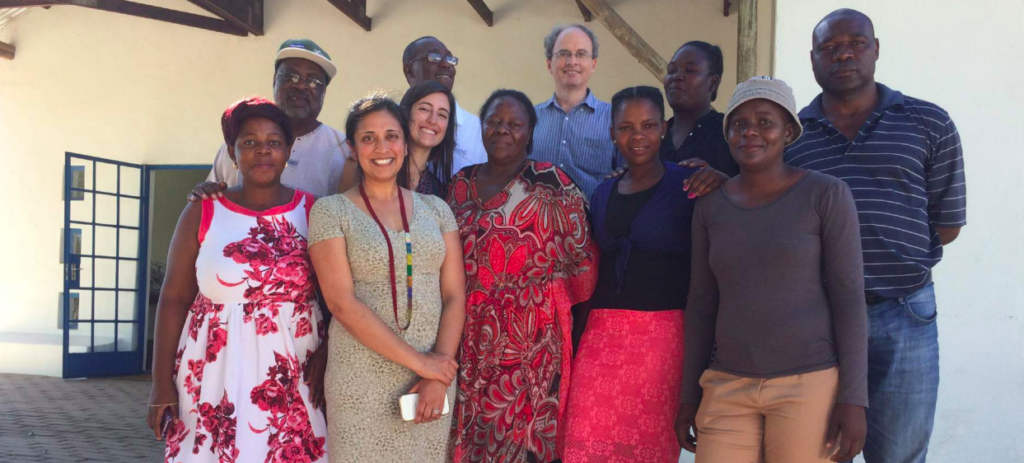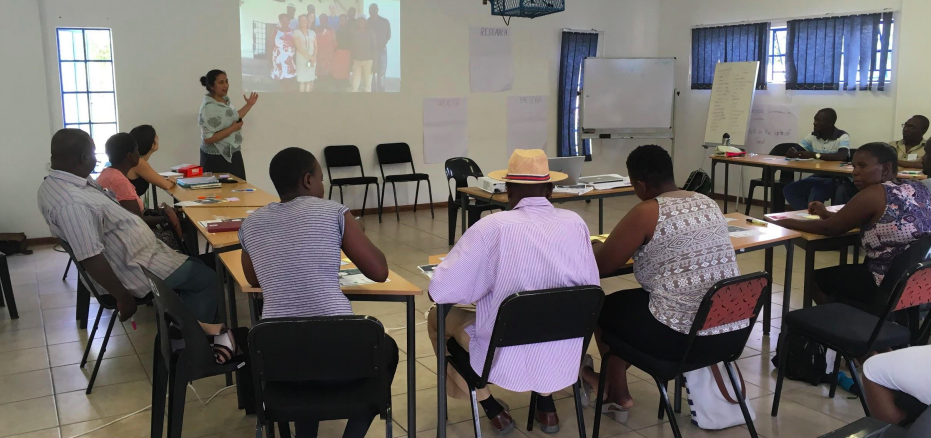Published: 04/08/2019
When scientists first gained the ability to analyze all the bacteria, viruses and fungi that live inside and on all of us, researchers hoped that those microbes, collectively called the human microbiome, could predict who gets sick and why.
Already, this relatively new field of study has provided evidence that variations in the microbiome are associated with variations in sickness and health.
As the field grows, Stanford’s Director of Global Oncology Ami Bhatt wants to ensure that microbiome research is inclusive and that conclusions drawn can be broadly applied. To that end, she and her team have partnered with researchers from the University of Witwatersrand to launch the first study specifically focused on microbiome factors and noncommunicable disease risk in Africa.
“We have known for some time that we need to increase the diversity of representation in genomics research,” Dr. Bhatt said. “This project has allowed us to work toward that objective, all while training us to collaborate more thoughtfully and effectively with scientists and community-based research participants all over the world. There is a long way to go, but I do believe we are getting closer to the ideal of research inspired “by the people and for all people”.
In addition to showing associations with sickness and health, microbiome studies have also shown that the human microbiome varies with location and lifestyle. Urban dwellers carry a different collection of microbes than people who live on farms. People who eat only plants have different microbes than meat eaters. And this is one reason the research generates so much excitement—if lifestyle choices can alter the microbiome, and variations in the microbiome affect health outcomes, people may have the power to live healthier lives. They just need the knowledge.
At the same time, the variations across location and lifestyle provide reason for caution. “If the microbiome differs from population to population, it’s not really a fair assumption that the results that we generate with any one population are generalizable to all humans,” said Fiona Tamburini, a PhD student working with Bhatt.

For scientists to find universal truths—for the research to fulfill its promise and provide actionable insights into human health—the research needs to account for people of different ages living on farms and cities and everything in between on different continents. To make a claim about all humans, all humans need to be represented in the data sets. And that’s not the case. Not yet.
In the 15 years that genome sequencing of the microbiome has become more affordable, most of the microbes sequenced have come from samples taken at the extremes of human existence. The majority of studies have examined wealthy communities in the west and a far smaller number have examined traditional hunter/gatherer and agriculturalist societies, such as the Hadza living in Tanzania.
The Bhatt/Witwatersrand collaboration focuses on South Africans who live in the middle of the continuum, as most of the world’s population does, somewhere between the no-tech life of the Hazda and high-tech dependent individuals in the U.S. and Western Europe. By focusing on people living in areas that are rapidly industrializing and gaining access to processed foods, the researchers hope to add to the body of knowledge and change the way we understand and protect health for everyone.
An assistant professor of medicine, Bhatt is a member of the core faculty for Stanford’s Center for Innovation in Global Health. A Bay Area native, she traveled to Addis Ababa, Ethiopia at the request of Center Director Michele Barry, to attend the 2015 meeting of the INDEPTH Network, an international consortium of research institutions that gathers health and demographic data from low- and middle-resourced countries.

At the conference, Bhatt met Michèle Ramsay, one of the lead investigators on Human Health and Heredity in Africa (a human genome studies referred to as H3Africa) and asked about extending that study to the microbiome. Ramsay introduced Bhatt to Scott Hazelhurst and Zané Lombard, two investigators who participated in H3Africa and were interested in the microbiome. Together, Bhatt, Hazelhurst and Lombard planned the new study.
“We kept having conversations and I remember very clearly Ami saying, ‘I don’t want to just reproduce the same patterns of scientists going somewhere, taking things and never coming back,’” said Karen Andrade, a post-doctoral fellow in the Bhatt Lab. The collaboration with Hazelhurst and Lombard, who had already leveraged connections with members of the INDEPTH consortium to engage the communities that participated in the study, provided the opportunity to create a new way of working.
In January 2017, Bhatt’s team met with their colleagues from University of Witswatersrand to plan the methods of collection and prepare the field workers for any challenges they might face. Throughout the following year, the network of field workers that the team from Wits had assembled collected the samples. And in 2019, members of the Stanford team traveled again to South Africa.
Fiona Tamburini and Eli Moss, both computational biologists and PhD candidates in genetics, hosted a hackathon-type meeting in Johannesburg where they discussed the different types of software, and the correct order needed to create a pipeline to analyze the massive amounts of data generated by microbiome research.
Ryan Brewster, a medical student, flew to Agincourt, one of the research sites in the Mpumalanga Province, to walk people through the plan for the study, explain the consequences of biased data sets, and answer questions. Although his audience did not have any formal scientific training, he realized they had a fairly sophisticated understanding of bacteria. “By the end of the workshop, they were able to really appreciate the relationship between the microbiome and their health, and beyond that, the importance of better representing their communities in research studies ,” he said.
Still, their level of understanding was not nearly as surprising as their willingness to participate. “What was most striking was the profound trust in the relationship the University of Witwatersrand has with the population,” Brewster said. “We had a participation rate of more than 90 percent.”

When the field workers asked people to participate, an overwhelming majority agreed even though they knew that there would be no health impact or clinically relevant information relayed. No one who participated would receive directions on how to improve their own health; no one would be referred to a clinic or given a diagnosis of any kind.
Still the community said yes. The team from Wits, as the university is often called, had invested in a relationship with this community and nurtured it for years as they completed longitudinal studies in HIV, kidney disease and aging. Consistently, the researchers told the community about the studies, asked their permission, promised to return, and kept their word.
“We know from community-engaged work that the act of returning, the act of showing that you are here, in and of itself is important,” Andrade said. “We will go back to the actual study participants and say here is the body of knowledge you’re helping to build.”
Funding for this project was provided by the Center for Innovation in Global Health and the Rosenkranz Prize for Health Care Research in Developing Countries. The Rosenkranz judges selected Bhatt for the honor in 2016 because they believed this project could be path-breaking. And they were right—this collaboration can serve as a model for any researchers wishing to compile robust data sets that add to our understanding of human health and allow us to better predict, prevent and maybe even cure disease.